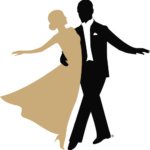The Joy of Connection: How Our Students Make Friends for Life on the Dance Floor
In today’s fast-paced world, building real, lasting friendships can feel harder than ever. Between busy work schedules, family obligations, and the constant pull of digital life, genuine connection sometimes takes a backseat. Yet there’s a place where bonds form naturally, laughter is shared without reservation, and trust is built step by step: the dance floor.
For many students, learning to dance isn’t just about mastering footwork or perfecting rhythm — it’s about the people they meet along the way. The magic of dancing is that it offers a unique combination of social interaction, shared experiences, and emotional connection, which often leads to friendships that last for life.
1. Why the Dance Floor Is a Friendship Magnet
From the very first class, students quickly discover that dancing is a shared journey. No one is perfect from the start, and that vulnerability — learning together, laughing at mistakes, celebrating small wins — creates instant camaraderie.
In dance, you can’t help but interact. Whether you’re practicing a ballroom waltz, a fiery cha-cha, or a smooth foxtrot, you’re making eye contact, communicating through body language, and working together to create something beautiful. These repeated moments of connection lay the foundation for trust and friendship.
Research even backs this up: studies from Oxford University have shown that synchronized movement, such as dancing, triggers the release of endorphins — the same “feel-good” chemicals that help people bond. This means the joy you feel after dancing is not just physical; it’s social and emotional, too.
2. Shared Goals Build Strong Bonds
One of the most powerful aspects of making friends on the dance floor is the way students support one another’s goals. In every class or social event, dancers cheer each other on. Whether someone is preparing for their first showcase, working up the courage to lead, or simply mastering a tricky step, their classmates celebrate those victories right alongside them.
This sense of shared achievement creates a team-like environment. Over time, these classmates become the people you look forward to seeing every week — not just for the dancing, but for the shared laughs, encouragement, and connection.
3. How Dance Breaks Down Social Barriers
On the dance floor, titles, job positions, and social backgrounds fade away. In place of formal introductions or small talk, you’re instantly moving together, relying on non-verbal cues, and collaborating in real time.
For students who may feel shy or introverted, this is a game-changer. The dance floor provides a safe, welcoming space where you can meet new people without the pressure of forced conversation. Many students are surprised at how quickly they form genuine friendships simply because they’re focused on dancing, not impressing.
4. From Classmates to Lifelong Friends
It starts small — maybe you chat with someone before class, laugh over a missed turn, or grab a quick coffee afterward. Over time, these moments add up. Soon, you’re attending social dances together, practicing outside of class, or even celebrating milestones in each other’s lives.
For many dancers, the friendships forged on the dance floor go far beyond the studio. They become travel companions for dance events, trusted confidants, and sometimes even chosen family. The shared memories of learning, performing, and growing together form an unshakable bond.
5. The Science Behind Why These Friendships Last
Social psychologists point to three factors that help friendships form and endure: repeated interaction, shared experiences, and mutual vulnerability. Dancing checks all three boxes:
1. Repeated Interaction: You see your classmates weekly — sometimes multiple times a week — which naturally strengthens your connection.
2. Shared Experiences: You’re learning the same skills, celebrating progress together, and experiencing the same highs and lows.
3.Mutual Vulnerability: Everyone makes mistakes and learns together, which builds trust and empathy.
Add in the joy and endorphins that dancing naturally provides, and it’s easy to see why these bonds last long after the music stops.
Final Thoughts: The Joy of Lifelong Friends on the Dance Floor
When people think about starting dance lessons, they often imagine learning a skill or finding a new hobby. What they might not realize is that they’re also stepping into a vibrant, supportive community where friendships grow naturally.
For many students, the best part of dancing isn’t just the music or the movement — it’s the people they meet along the way. The laughter shared, the challenges overcome, and the moments of connection on the dance floor create bonds that last for years, sometimes even decades.
So while dance may start as a way to learn something new, it often ends as something far more meaningful: a lifelong friendship, forged one step at a time.

